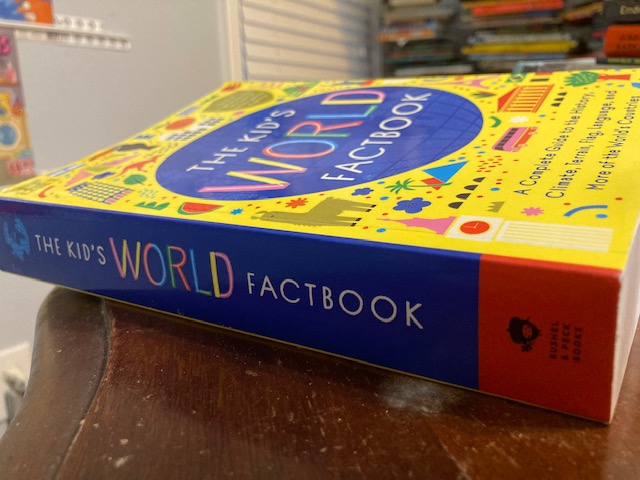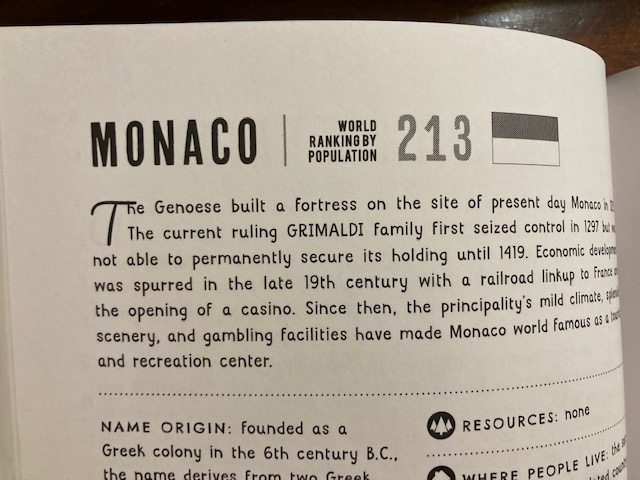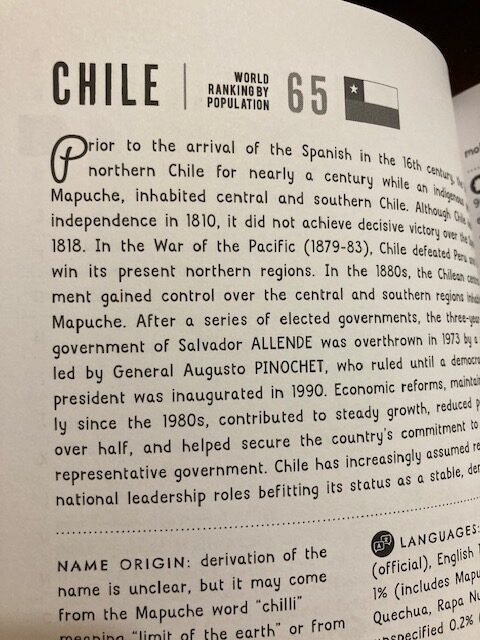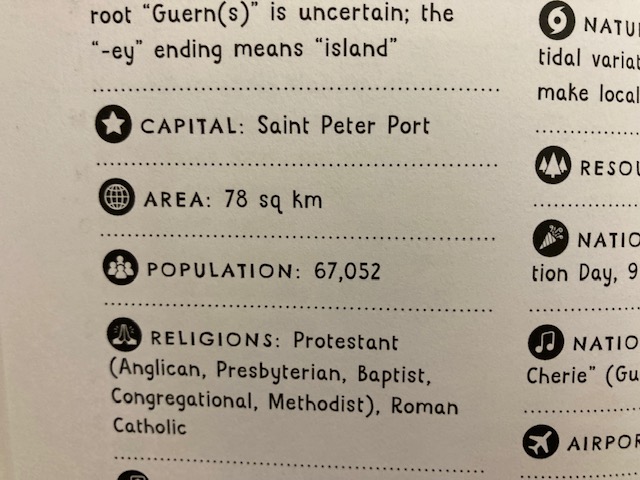The Kid’s World Factbook is a research book for elementary school students that’s presented in a way that those audiences might not expect. It’s also priced at a point that parents aren’t expected. Of course, the price of a book is meaningless, dependent upon whether or not kids will actually willingly read it and engage with the content. This book succeeds on both fronts, wildly surpassing the former and exceeding the first qualifier for most young readers.
The sweet spot for The Kid’s World Factbook is fifth grade through middle school, with those fourth-grade students also being able to read and enjoy the book. What makes the book unique is how smart and level-headed the book approaches those readers. This is not a world geography or fact book that’s attempting to get their attention through color photographs, different sized font, and large pages.
Instead, this book is the size of a normal fiction book but is much thicker as it lists all of the countries in the world. Yep, from A to Z every country is listed in alphabetical order. The Kid’s World Factbook is in black and white; and lists many of the same characteristics for each country, such as capital, population, religions, holiday, area, and more. The book digs a little deeper on some countries and posts things like resources, climate, and natural hazards. Each country also has a realistic map that shows its neighbors, bodies of water nearby, and geographical features within it.
What makes the book unique amongst upper elementary and middle school readers is it’s studious, consistent nature. The United States is provided with the same number of pages as Niue. Likewise Cuba and Brazil, every country is given two pages to talk about themselves and no more. On the same page that the country is listed in its alphabetical order, beside the country’s name is where it ranks in the world’s population. Morocco is the world’s 40th most populous, whereas Singapore clocks in at 110. I always thought that Singapore had more people who lived there.
Monaco is the second-most densely populated country in the world. Greenland is the world’s largest island. Saint Martin was claimed by Spain in 1493, but it was the Dutch who first occupied the island to mine its salt deposits. It’s little tidbits like those that will keep readers coming back to the book for any number of reasons. They’ll start out because they have to for some non-fiction report they’re doing in mid-elementary. They’ll come back to the book because they’ll find some odd trivia about a country and then share it with their friends. Those older readers will use the book for a combination of those reasons.
And it’s that final reason that will impress those who can see the greater picture. The range for The Kid’s World Factbook is vast and larger than the average bear. It’s got content for upper elementary, yet is smart enough for middle school audiences to be able to get nuggets of information from. Stated another way, it makes those younger kids reach higher and those older audiences want to dig deeper. If your reader is only used to using full-color books with blurbs of information then this format might take some getting used to. However, this b&w look is refreshing because it’s consistent, treats all of the countries equally, and is still a fun book to read.
The Kid’s World Factbook is on Bushel & Peck Books and is adapted from The World Factbook 2021 by Central Intelligence Agency.
There are affiliate links in this post.









 Facebook
Facebook Twitter
Twitter Flickr
Flickr GooglePlus
GooglePlus Youtube
Youtube